Tom's Guide Verdict
Kanto’s top-notch desktop speakers get better with every iteration, and the Ora4 perfect the formula. They’re small enough to not completely invade a desk, and yet powerful enough to fill your office space with sweet, sweet tunes. There are some useful inputs on the back as well, although I wish there were a couple more to really round out the selection.
Pros
- +
Simple look and style
- +
Excellent, welcoming sound
- +
Very simple to use
- +
USB-C input is an excellent addition
Cons
- -
An HDMI port would be nice
- -
There are some unsightly mold lines in places
Why you can trust Tom's Guide
When I’m sitting at my desk, staring at buying guides and fiddling around with Bluetooth settings to work out when something won’t connect to my MacBook (hot tip: make sure you’ve turned on pairing mode), there’s nothing I like more than listening to some music. Sometimes, though, I don’t want to use my headphones, and I want to keep my head free of tangling wires or heavy headsets. That’s where desktop speakers like these, the Kanto Ora4, come in.
I also like to play my own music at my desk, and then mix it (very amateurishly, might I add), and I want something with a balanced sound profile to get a good idea of what the finished project might sound like. The Kanto Ora4 aren’t just listening speakers but studio monitors, capable of playing my mixes with a neutral sound so that any one part isn’t accentuated. There’s more to them of course, but they’ve already booked themselves a place in our best computer speakers list. Let’s find out why.
Kanto Ora4 review: Cheat sheet
- What is it? A pair of studio monitor speakers that are also great for desktop music listening.
- Who is it for? Mixers, home office dancers, and everyone in between
- What does it cost? $399/£399
- What we like: The welcoming, pleasing sound profile, and their compact shape and size.
- What we don’t like: An HDMI port would really round out the connectivity, and there are a couple of molding lines left on their chassis from the manufacturing process
Kanto Ora4 review: Price and Availability
Price $399/£399
Connectivity Bluetooth, USB-C, RCA
Weight Amplified speaker: 4lb 3oz Passive speaker: 4lb
Colors Black/White
Compatibility iOS, Android, macOS, Windows
Frequency response 60 Hz–22 kHz
While more expensive than many sets of desktop speakers that you spot on the digital shelves of Amazon or Best Buy, I’d say that the Kanto Ora4 are competitively priced. Their $399 price tag does raise them slightly into the realms of the mid-range, rather than the budget bracket. There are cheaper from the likes of Presonus and Edifier, but you get a more complete feeling package with the Kanto option.
Getting a hold of a pair is easy enough — they’re available on Amazon, or on the Kanto website.
Kanto Ora4 review: Design and Build
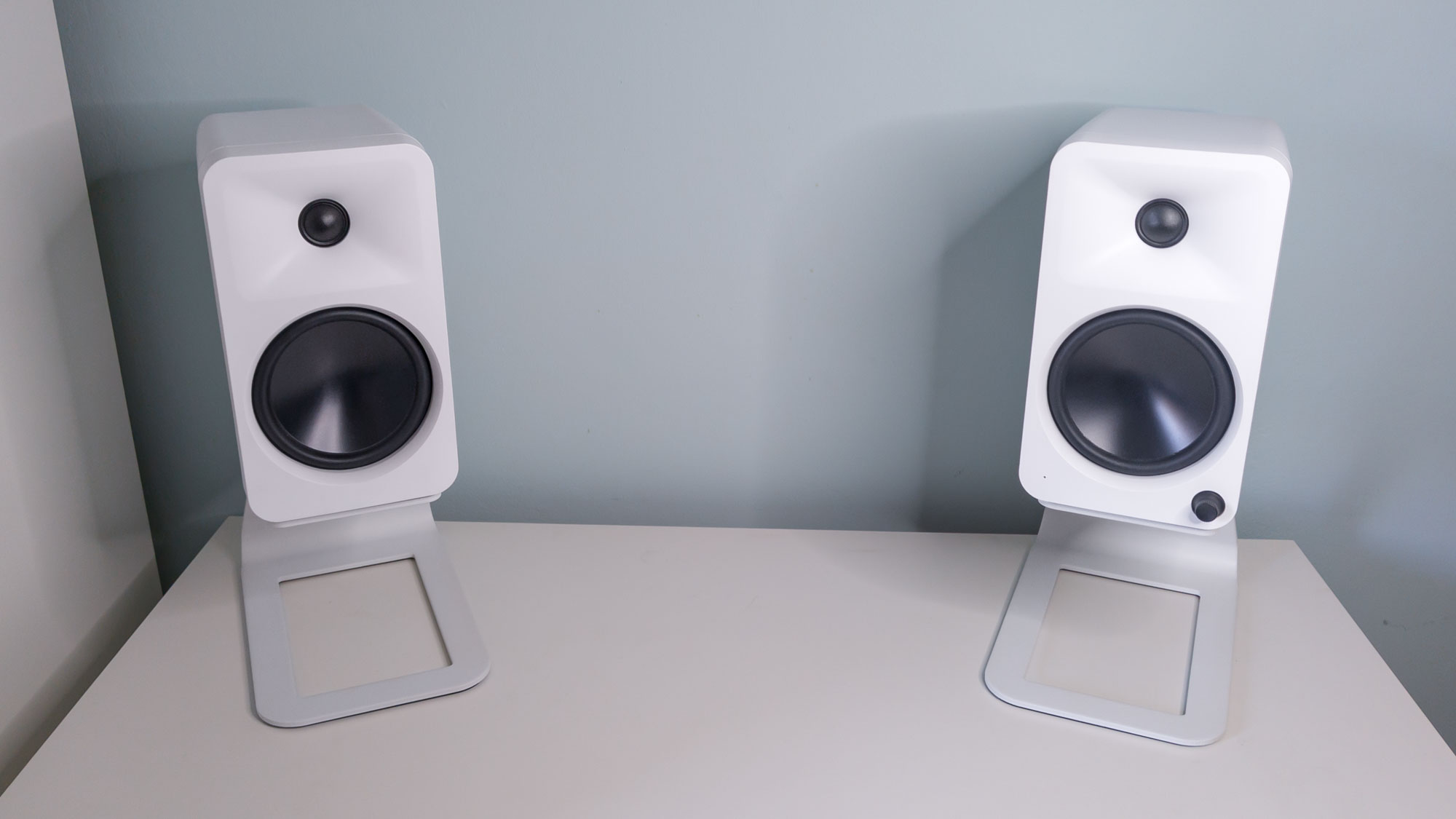
- Simple, block color
- Tasteful cabinets
- Some mold lines take the sheen off
Considering they’re mostly going to find their way onto mixing desks or be nestled near computer displays in home offices, the Ora4 don’t need to be particularly attractive. I’d say they look good, if simple. They are, in essence, a pair of drivers enclosed in some fairly nondescript block-color boxes. There’s a kind of functional charm to them though, and their clean look means they will easily slip into any desk setup without standing out too much.
Build quality is, for the most part, top notch; although I did find a few mold lines on the speakers that took some of the sheen off when I took them out of the box. When situated there’s absolutely no issue at all, and you won’t notice any manufacturing imperfections. But, like an unpainted engine in a model car, I know it's there.

I was also sent the stands for the Ora4, although you’ll have to buy yours separately to the tune of $39. I wish they were included in the box, because they are marvelous. You can attach your Ora4 with the included screw, but they’re just as happy to sit there without attachment. It will reduce vibrations, so it’s better to be safe than sorry.
They raise the speaker up on your desk so that they’re more in line with your ears so that they sound even better — and unless you’ve got a pair of displays side by side on a desk, they’re a great way to place the speakers at a better height. They’re slightly angled up as well, although there is no way to adjust the height. For a sheet of folded aluminum, they are excellent, with padding where the speaker will sit. They come in the same colors as the speakers.
Kanto Ora4 review: Controls
- Useful clicking volume nob
- You don’t need much else
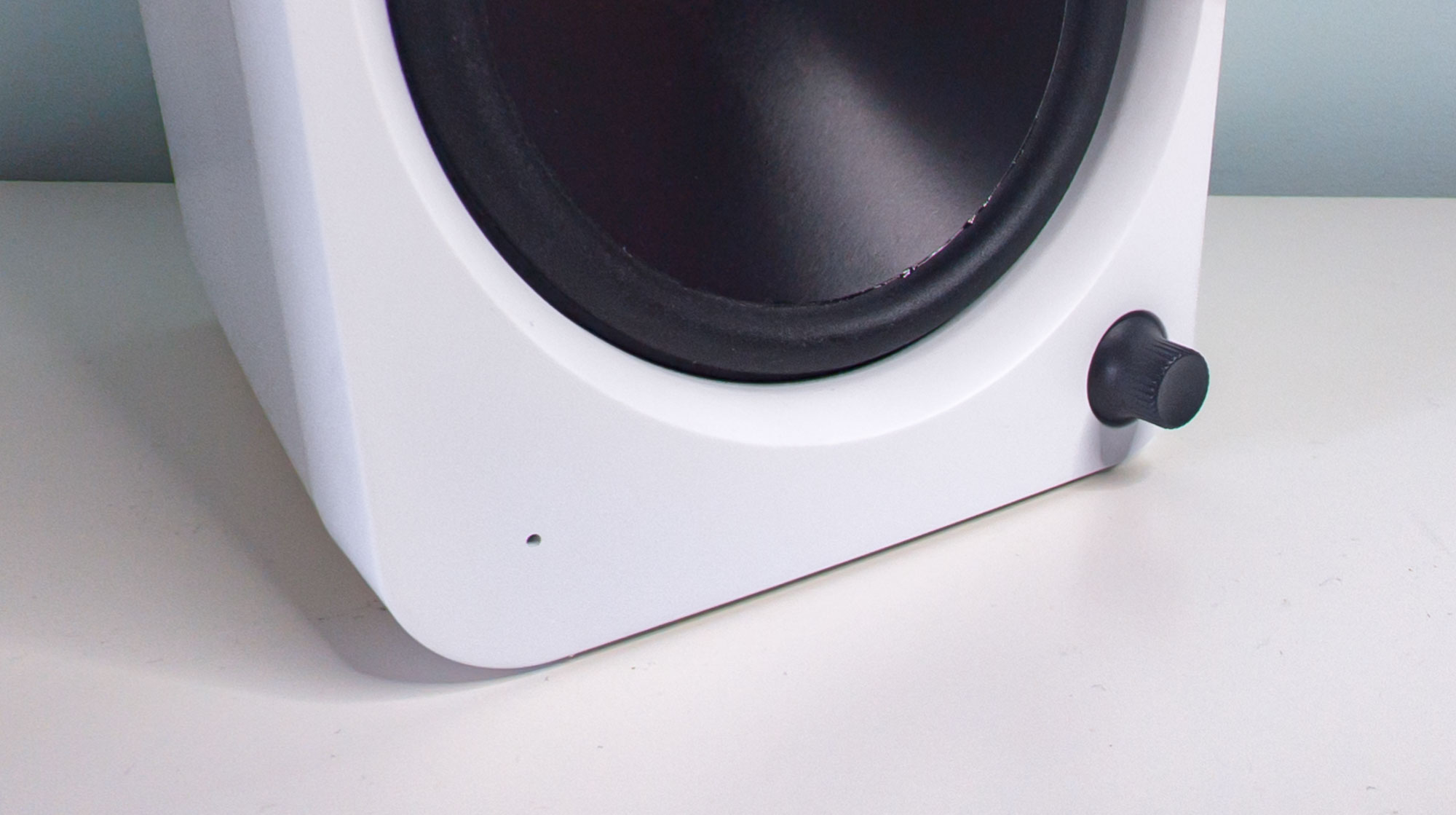
Controlling the Ora4 couldn’t really be simpler — you connect all the cables you need on the back, and then cycle through the inputs by clicking the nob on the front of the right-hand speaker. Hold the nob down to turn the speakers on and off, and then turn it to manipulate the volume. There’s not really much else to it on the speakers themselves, and there’s nothing else you use to control them. There’s no Bluetooth app, and no extra software for the USB-C port. They just kind of… work.
The nob feels good, and it’s functional. It’s not the best-looking around, but it does exactly what it needs to. You can tell what input you’re using with the little LED light that’s hidden away on the other corner of the right speaker. Blue for Bluetooth, yellow for USB, and Green for RCA. When the speakers are off, the LED is off. Nice and simple.
Kanto Ora4 review: Connectivity
- Some useful inputs for desk users
- Bluetooth
- Would be nice to see HDMI
There are loads of ways to connect your devices to the Ora4. The best one that’s going to be great for mixers and music producers is the USB-C port. That’s going to be a great way to get your speakers to play top-notch sounding audio, and also a great way to really integrate them in your digital audio workstation. It’s good for playing music as well, playing hi-res and high bit-rate tracks with no problems at all. This is my preferred way of hooking the speakers up.
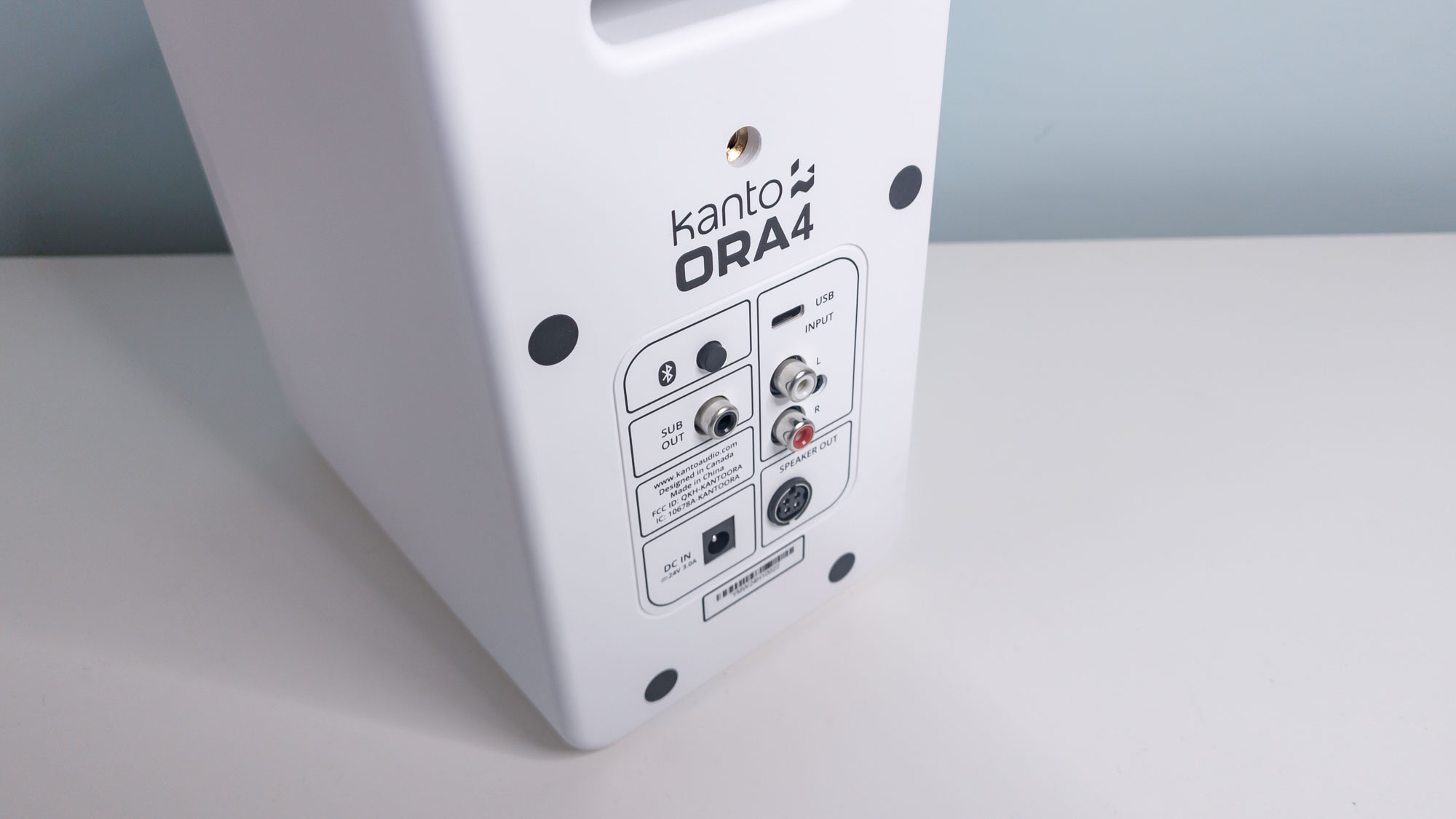
There’s a RCA line-level input as well, great for an aux cable or even a turntable — provided you’ve got a separate pre-amp, or there’s one built into your deck. It’s a great addition to the inputs, though.
Then there’s the Bluetooth 5.0 connection, which is fine. It’s a good way to get audio to the speakers wirelessly, although it would have been nice to see a newer BT version like 5.3 or even 5.4. Latency is a bit of a problem here, so while playing your music is all good, you’ll struggle more with watching movies and TV or playing games. Connecting is easy enough — hit the little pairing button on the back when they’re in Bluetooth mode, and then find the speakers on your chosen output device. It's also great if you're looking for static alternative to the best Bluetooth speakers, given you get physical stereo straight out of the box.
Those two latter uses though do raise something that I’d like to see on desktop speakers — an HDMI port with ARC or even eARC. There are now monitors for gamers that are starting to show up with the standard, and it would making connecting games consoles (which more and more people are now using at their desks as opposed to in front of the TV) much easier. At the moment, you’d have to connect the RCA to your monitor, PC, or games controller — and for the latter, you’re not going to get very good sound. An HDMI port would fix this issue, and make for a fully rounded connectivity selection. You could even use them as small speakers for a TV in a smaller room, something they’d excel at.
Kanto Ora4 review: Sound Quality
- Fairly neutral sound signature
- Some bass weighting
- Still very detailed
Before we get started with how the speakers actually sound, there are a couple of setup things that you’ll want to sort out first. The stands do part of the job for you — raising the speakers so that they’re closer to a level at which they’ll sound excellent. From there, you’ll want to dial in the toe-in, which just means turning them slightly so that they face towards you rather than straight forwards. I usually say about 10 degrees should do, although depending on how ‘holographic’ (that means the music sounds like it's coming just behind you) you like your speakers to sound you might want to make adjustments while playing some tunes you’re familiar with.
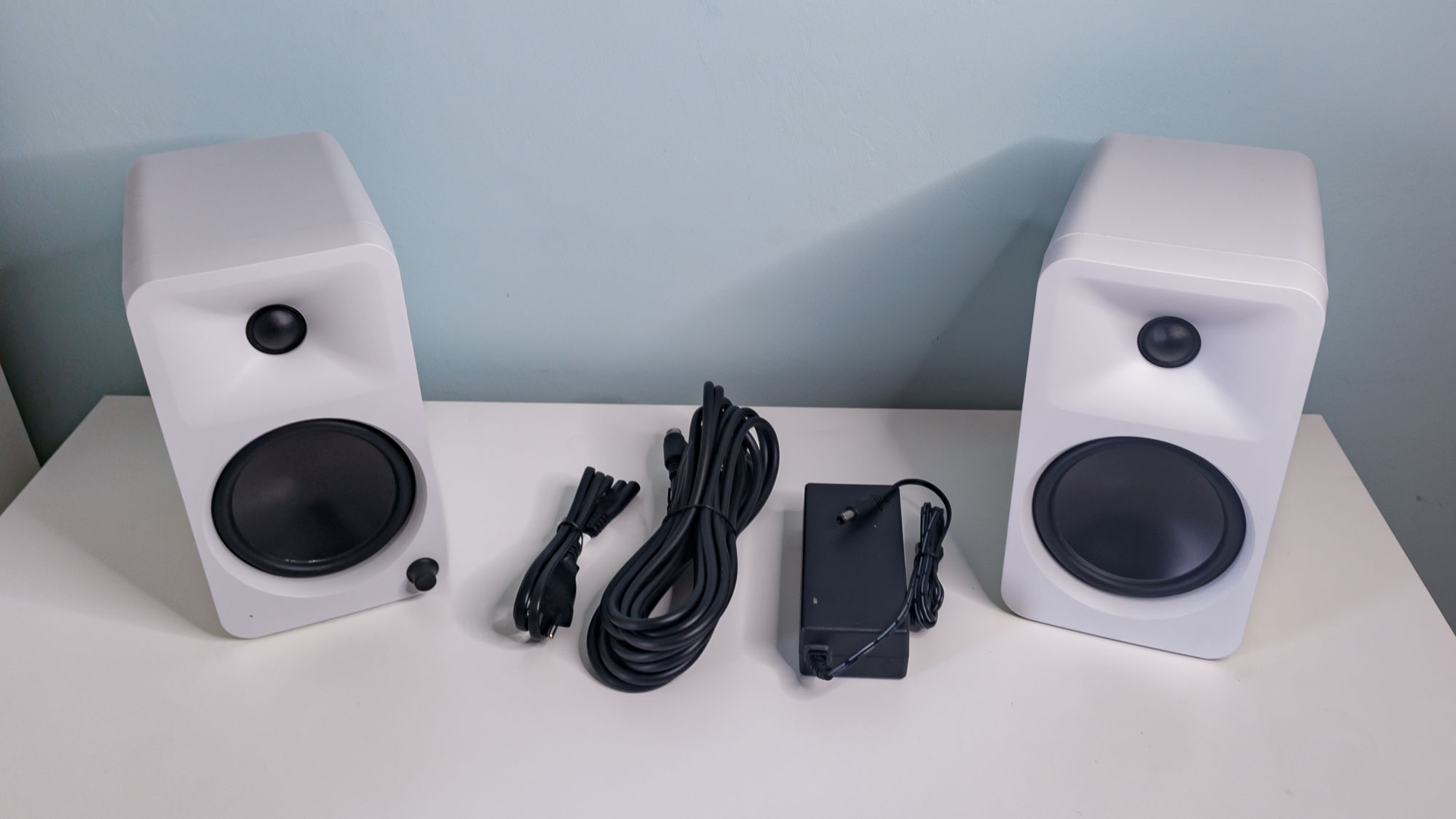
Once you’re dialled in, you’re in for a sonic treat. Being reference speakers, the Ora4 are slightly more restrained in the low end than some of the more casual focused options, but the bass that is there is weighty, punchy, and very solid. The mid-bass is where alot of the speaker's impact come from, and it lends a warmth to the sound that many are going to like a lot. The mids are thick and smooth, and then highs, while perhaps slightly rolled off at the very top-end, are detailed and bright.
Sabaton’s The Red Baron bursts forth with chest thumping fury, the distorted guitars cutting through the solid drum backing. Brodén’s gruff vocals ooze a kind of rough, chiseled machismo, and the Ora capture his essence perfectly. The driving beat rumbles, the bass guitar clear and picked out in detail behind the rest of the cacophony. Try not to throw your fists in the sky to its infectious bravado.
For something a little smoother, Chet Baker croons his way to your desktop through There Will Never Be Another You. The opening trumpet line is clear and concise, while the drums gently chuff in the background. The double bass is deep as it is wide — and the whole affair feels intimate and close. The Piano arrives to show off the clarity that the speakers are capable of, and then Chet arrives with his sublime voice. Lovely.
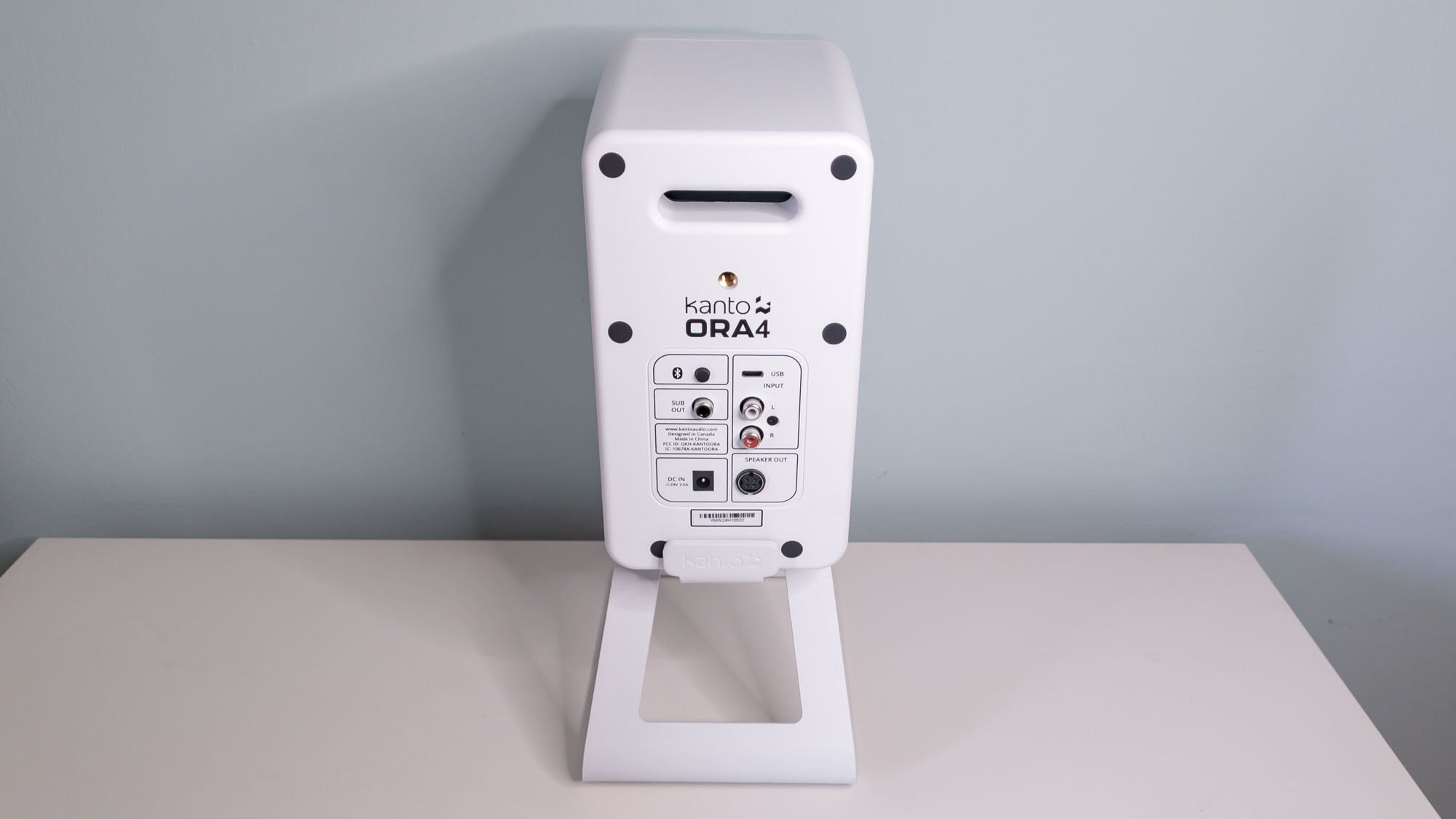
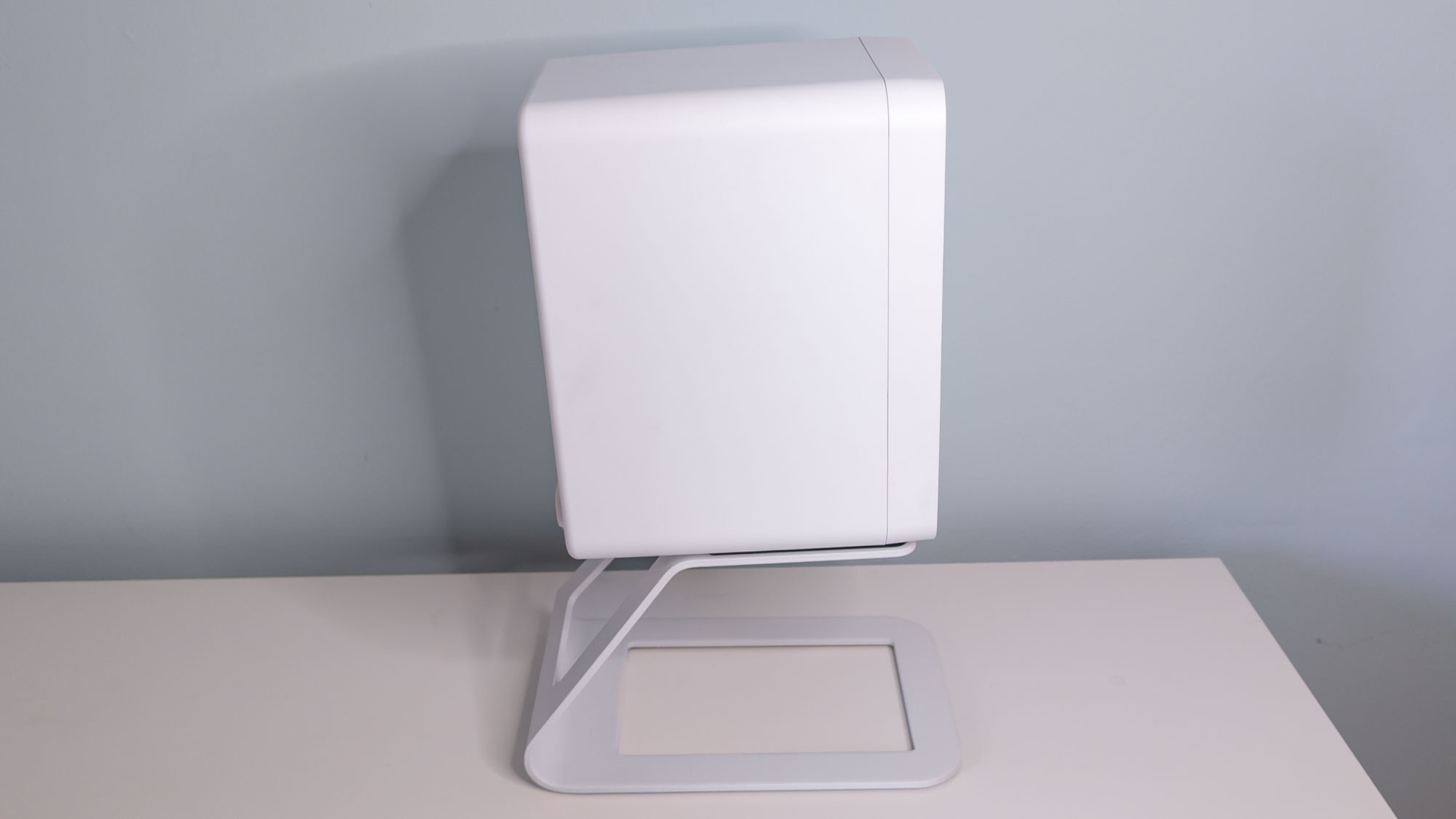
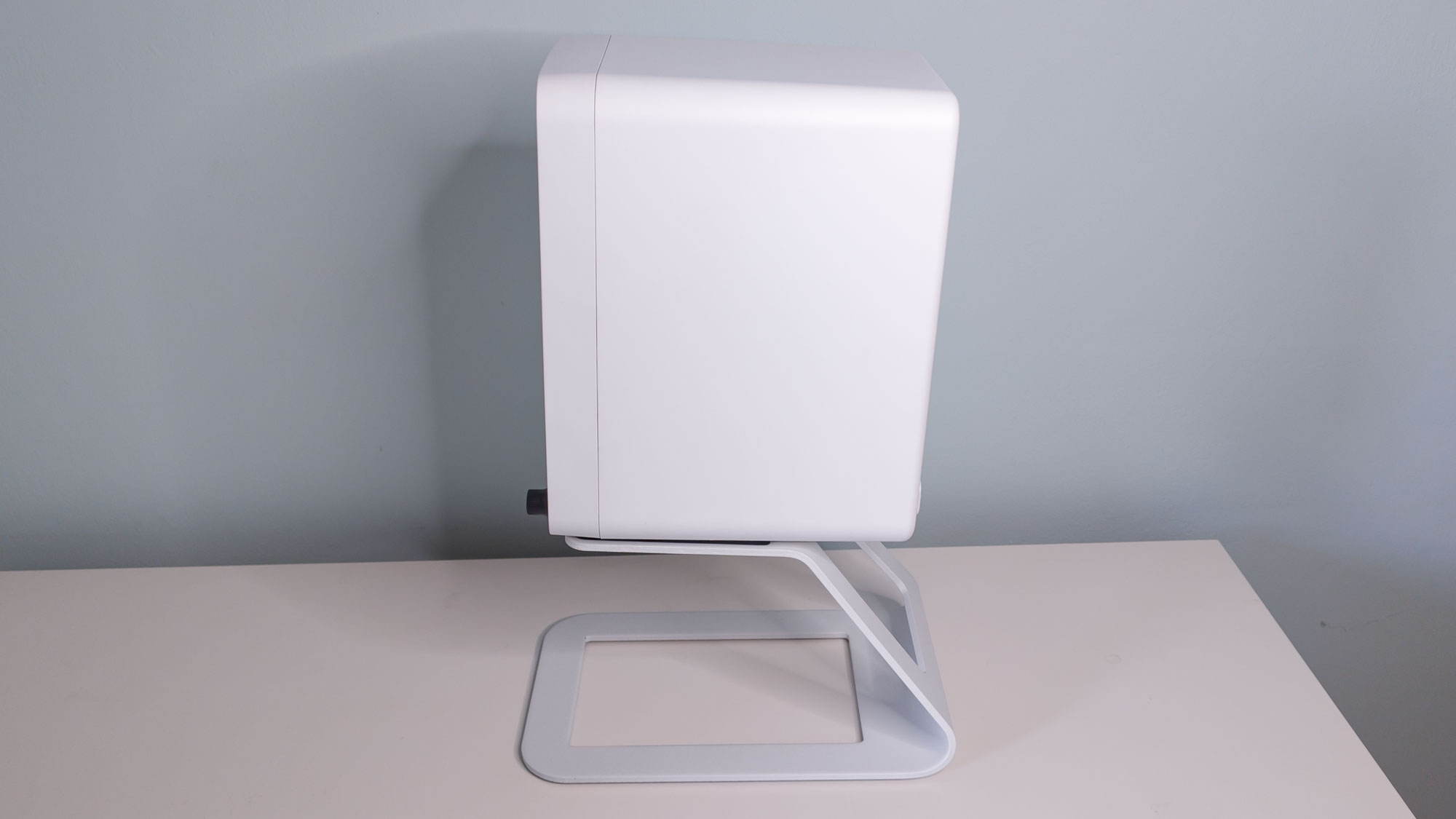
Finally, we speed things up again with pendulum’s Plasticworld. The quick drumming is dynamic, while the sax sample dances between the notes. The bass kicks in and the Ora are capable of some remarkable ‘thump’ — the synth follows and the whole experience layers into a pounding D&B tour de force. While in your face, it still manages some delicacy with the vocal lines. If you ever decide to have a dance party in your office, or if you’re product Drum & Bass, then these are a great option — although the latter will likely want to add in a subwoofer for extra low stuff.
For normal listening, their neutral sound stage makes it easier to hear everything that your music has to offer, while for mixers its good to hear how the music they're making will sound without any extra color that is so common with cheaper options. Gamers will like the impactful bass for gunshots, and thanks to some impressive stereo imaging, they’ll be able to place other players with more accuracy than other options.
Kanto Ora4 review: Verdict
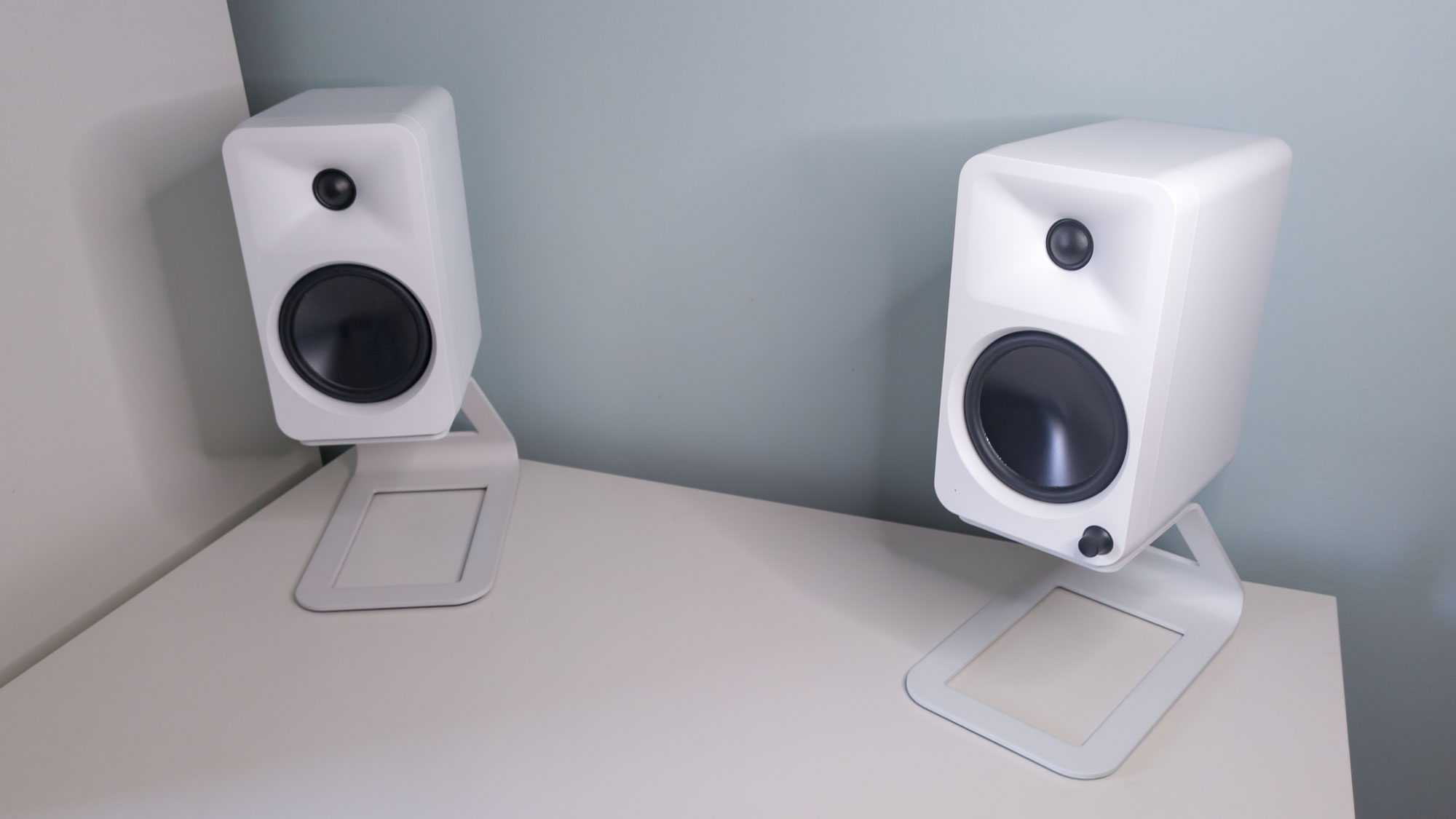
The Kanto Ora4 are a great pair of speakers no matter where you might put them. They’re excellent for producers thanks to a sound profile that won’t color their music, they’re great for casual listeners who want some new desk speakers that connect to their PC or Mac, and they’re excellent even for bedrooms thanks to that RCA connection and Bluetooth. They sound amazing, look slick, and come in at a not completely unreasonable price.
There are only a couple of things that hold them back. The build, while mostly excellent, does have a couple of areas that you might find with your fingers and go ‘Oh, a mold line’. The connectivity, while solid, could use just a couple more options like an HDMI port. At the very end of it all though, the Ora4 are an excellent pair of speakers, and quite possibly some of the best computer speakers that I’ve ever tested.
More from Tom's Guide

Tammy and her generous collection of headphones have found a new home — Tom's Guide! After a two-and-a-half-year stint as iMore's resident audiophile, Tammy's reviews and buying guide expertise have more focus than ever on Tom's Guide, helping buyers find the audio gear that works best for them. Tammy has worked with some of the most desirable audio brands on the planet in her time writing about headphones, speakers, and more, bringing a consumer focussed approach to critique and buying advice. Away from her desk, you'll probably find her in the countryside writing (extremely bad) poetry, or putting her screenwriting Masters to good use creating screenplays that'll never see the light of day.

